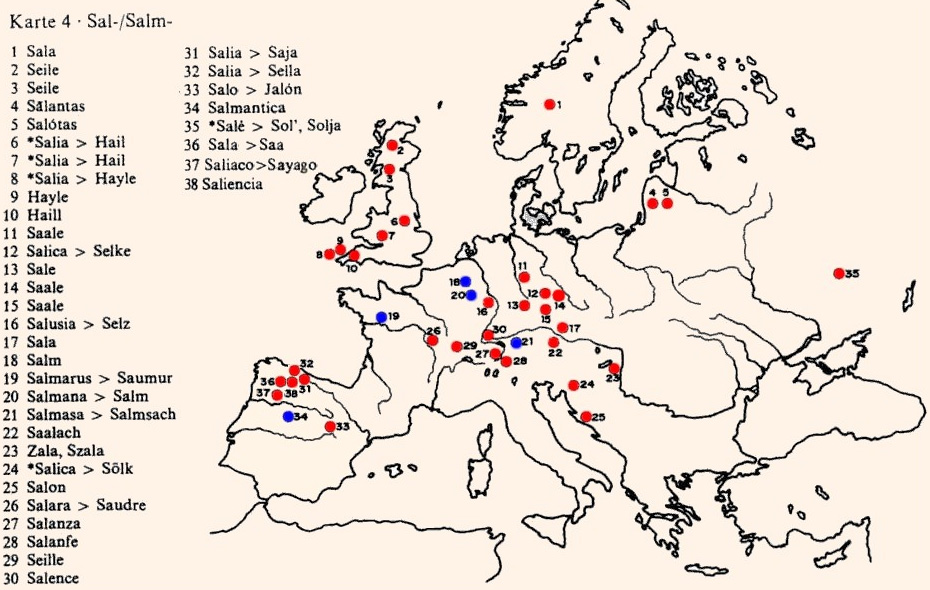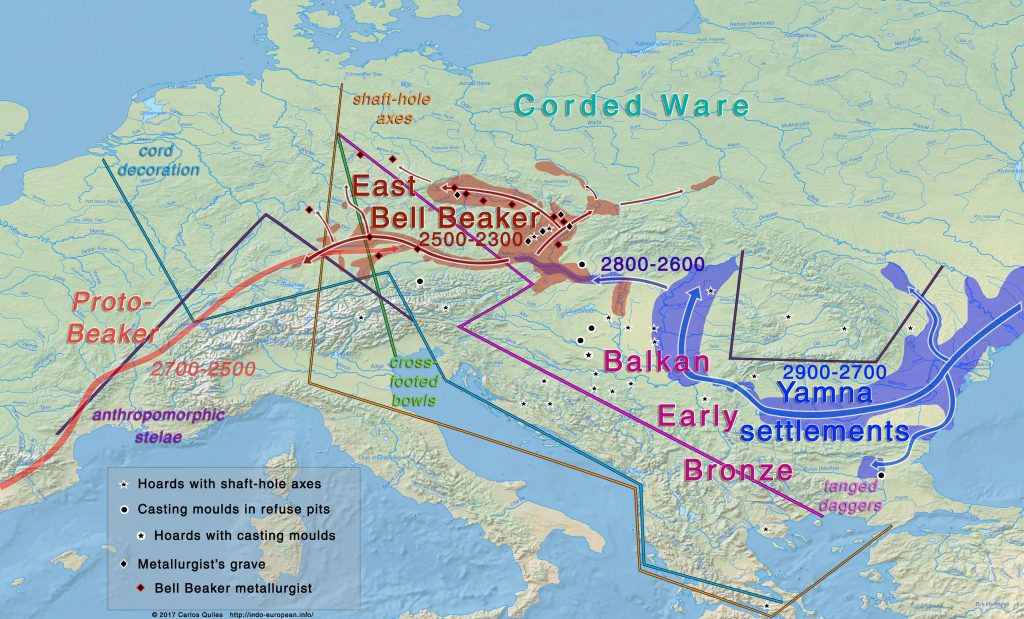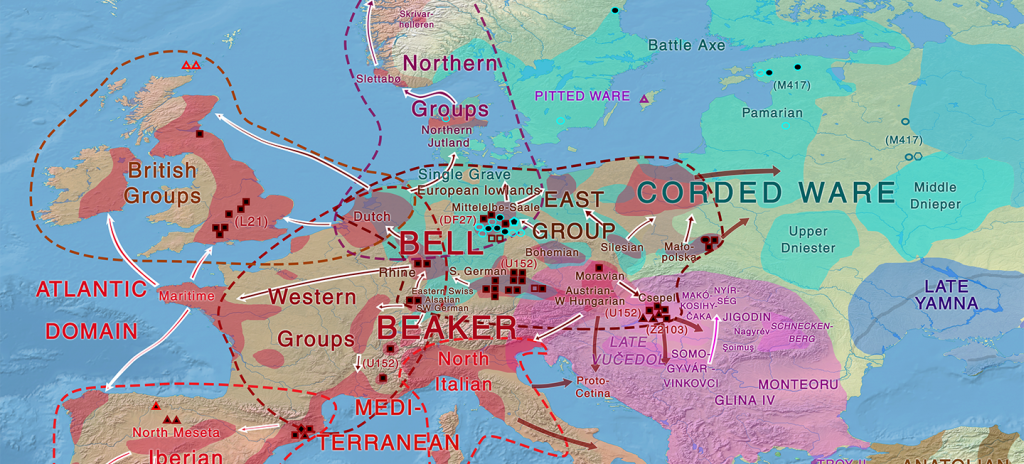I wrote yesterday about the recently updated Indo-European demic diffusion model.
Fernando López-Menchero and I have published our first draft on the North-West Indo-European proto-language. Our contribution concerns mainly phonetics, and namely two of its most controversial aspects: a common process of laryngeal loss and two series of velars for PIE.
There is also an updated linguistic model for the Corded Ware substrate hypothesis, which seeks to explain certain similarities between Germanic and Balto-Slavic, and between Balto-Slavic and Indo-Iranian, and potential isoglosses between the three.
Available links:
 The official Wiki collaborative website oldeuropean.org
The official Wiki collaborative website oldeuropean.org Download PDF v. 1.0 (2.7MB), from indo-european.info, the official download site
Download PDF v. 1.0 (2.7MB), from indo-european.info, the official download site Academia.edu (v. 1.0)
Academia.edu (v. 1.0) ResearchGate (v. 1.0)
ResearchGate (v. 1.0)
As you probably know, our interest is (and has been for the past 15 years or so, even before our common project) the reconstruction of a North-West Indo-European proto-language, the ancestor of Italo-Celtic, Germanic, and Balto-Slavic. At least since Krahe’s proposal of an Alteuropäische substrate to European hydronymy, some 70 years ago, Indo-Europeanists have been supporting an Old European branch of Proto-Indo-European.

However, dialectal divisions were tentative. Since Oettinger, some 30 years ago, we have a clearer picture of a group of closely related dialects, namely Italo-Celtic, Germanic, and Balto-Slavic. Although the nature of Balto-Slavic is somehow contended (for the few scholars who support an Indo-Slavonic group), the minimalist view holds that at least the substrate language of Baltic and Slavic, Holzer‘s Temematic, was part of the North-West Indo-European group.
A North-West Indo-European (NWIE) proto-language not only solved the controversial question of Pan-European IE hydronymy (clearly of Late Indo-European nature), but also – and more elegantly – the question on the origin of the many fragmentary languages attested in Western Europe, usually attributed to a “Pre-Celtic” or “Pre-Italic” nature depending on their surrounding languages (Venetic has even said to be related to Germanic…).

Described first mainly in terms of lexical isoglosses, the concept of a NWIE language was then gradually and strongly founded in common grammatical features, contributed to mainly by the German, North American, and Spanish schools (as you know, the British or French schools are quite divided on the nature of Proto-Indo-European itself…). Recent archaeological models pioneered by Harrison and Heyd (2007) showed how this might have happened, with Yamna migrants that evolved as the East Bell Beaker group, and their subsequent expansion into most of Europe.
Genetics is now clearly supporting such a closely related group, too.

The work of Prescott and Walderhaug (1995) on the Pre-Germanic homeland, and the more precise archaeological migration model developed by Prescott clearly established the advent of Bell Beakers in Scandinavia as the key factor for the development of a unitary Pre-Germanic language in Scandinavia during the Dagger Period of the Nordic Late Neolithic.
The nature of Únětice and Mierzanowice/Nitra cultures as of Bell Beaker absorption of preceding Corded Ware cultures made the identification of the Balto-Slavic homeland in the Lusatian culture as quite likely – and this is now being confirmed with the study of Bronze Age samples, like those of the Tollense battlefield, which cluster closely to West Slavic and East German samples.
At the time of Marija Gimbutas’ breakthrough model of the “kurgan peoples” a common dialect from this Old European branch was deemed to be ‘Northern European‘ (or ‘Germano-Balto-Slavic’), which greatly influenced her work, supporting an identification of different burial types as stemming from the same source. This model, rejected already some years after Gimbutas’ proposal, has sadly survived to this day because of tradition (due e.g. to the work and influence of Kristiansen, and to some extent Anthony), and for some years (until the advent of ancient DNA) because of the modern distribution of haplogroup R1a in Europe and its relation to the ancient distribution of the Corded Ware culture.
This traditional model of a ‘Corded Ware -> Bell Beaker expansion of NWIE’ which we also followed until recently, never fit well with the known migrations paths from Yamna (into Balkan Early Bronze Age cultures), with the geographic distribution of Old European hydronymy, or with the guesstimates for Late Indo-European and North-West Indo-European. This compelled us to support a break-up of the proto-language further back in time than warranted by models of language change, and it needed certain unlikely cultural diffusion events over huge areas (because no such migration from Yamna to northern Europe has been attested): along the steppe/forest-steppe zone first, for a diffusion from Yamna into Corded Ware cultures, and along the Danube or the Rhine later, for a diffusion of Corded Ware into Bell Beaker. These models were also based on the wrong interpretation of the first radiocarbon dates of Beakers – placing an origin of the Bell Beaker people in Iberia (which has been rejected in Archaeology, and now also in Genetics).
Such a ‘Germano-Balto-Slavic’ group faded in Linguistics long ago, with most Indo-Europeanists preferring to talk about late contacts (viz. Celto-Germanic or Italo-Germanic contacts), and for some there is – if any subgroup at all – a core West Indo-European or Italo-Celto-Germanic group, which may be supported by recent genetic research on Bell Beaker peoples, with the Beaker group of the Netherlands being the key. Our research on the potential language spoken by Corded Ware peoples – most likely related to Uralic, from an Indo-Uralic community from the Pontic-Caspian steppe – can elegantly explain the isoglosses that both European dialects share.

Read also: Schleicher’s Fable in Proto-Indo-European – pitch and stress accent
Related:
- Heyd, Mallory, and Prescott were right about Bell Beakers
- New Ukraine Eneolithic sample from late Sredni Stog, near homeland of the Corded Ware culture
- Germanic–Balto-Slavic and Satem (‘Indo-Slavonic’) dialect revisionism by amateur geneticists, or why R1a lineages *must* have spoken Proto-Indo-European
- Wiik’s theory about the spread of Uralic into east and central Europe, and the Uralic substrate in Germanic and Balto-Slavic